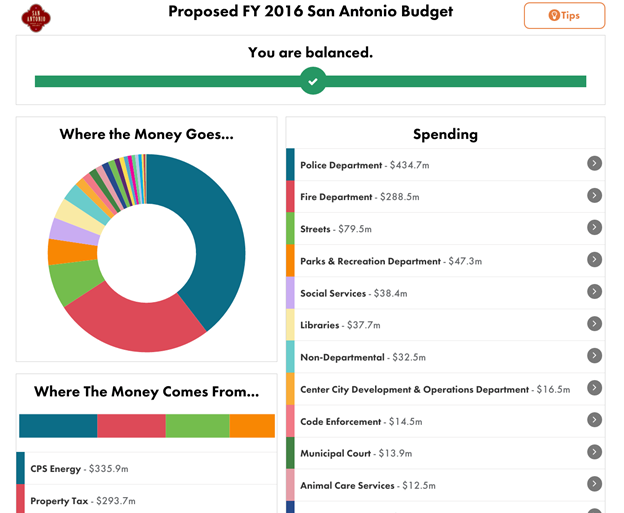When a government decides a tax rate increase is in order, it will often “take it to the people”. Indeed, any jurisdictions are required to do that, by law. But how do you ensure that the people going to the polls are well-enough informed to make a decision?

Our February webinar – which was a co-production with the National Coalition for Dialogue and Deliberation (NCDD) – looked at “Balancing Act”, a tool designed to help members of the public understand the realities of public budgeting. A wish list is one thing; weighing that against all the other demands on the public purse is quite another, and this tool allows you to look at the actual budget, with all its line items, and determine how much can be spent in one area without robbing another area blind.
Chris Adams, president of Engaged Public, developers of Balancing Act, pointed out that the traditional “three minutes at the mic” style of public meeting usually degenerates into a shouting spree, while taking the time to explain the often highly-technical financial details can take a CPA to understand.
Balancing Act gives ordinary citizens the ability to voice their opinion and put the situation in context. It allows them to take part in the public budgeting process without going to a public hearing. They can let governments know if spending priorities are in line with their expectations and values. The conversations become real and not rhetorical – different sides asking questions to which they already know the answer – and the tool can be used in a group setting, so people can start to work together.
For governments, it allows them to meet the increasing expectations of the public to be more involved in the process. They can channel citizen complaints into actionable information and build public trust at the same time, as people see that their concerns are being addressed and taken seriously.
Balancing Act can be adapted for school districts and other government bodies, as well as for different currencies and languages. There’s also a free version offered to participatory budgeting projects.
IAP2 Canada members may view the webinar here.
Engaged Public also has a LinkedIn discussion group, Engaging the Public on Public Budgets, and you can find out more about Balancing Act online at www.abalancingact.com.
